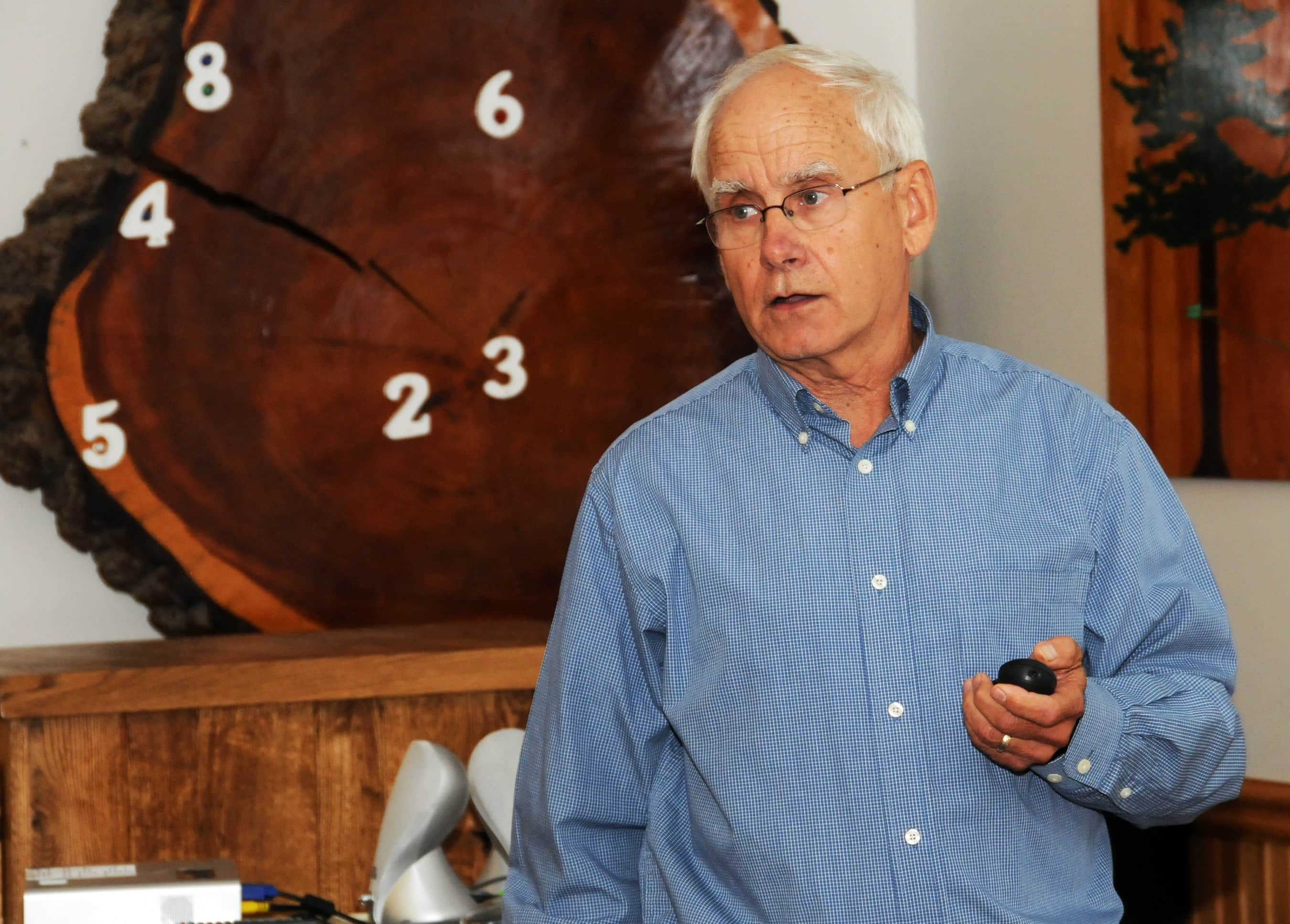Wisconsin Official Warns That CWD’s Worst is On Its Way
Patrick Durkin 09.06.13

Dave Clausen dusts off two quotes when discussing Wisconsin’s struggles with chronic wasting disease (CWD) in its deer herd the past 11 years.
When the Amery, Wisconsin veterinarian thinks of hunters who shrug off CWD and simply demand more deer, he invokes the late Southern author Flannery O’Connor: “The truth does not change according to our ability to stomach it.”
And when Clausen considers what future generations might think when learning that Wisconsinites largely ignored CWD even as it grew exponentially in the early 2000s, he recites Gaylord Nelson, Wisconsin’s late governor and U.S. senator: “The ultimate test of a man’s conscience is his willingness to sacrifice something today for generations tomorrow whose words of thanks will not be heard.”
Clausen served nearly seven years on Wisconsin’s Natural Resources Board after being appointed by then-Governor Jim Doyle in 2006. The seven-citizen Board sets policy for Wisconsin’s Department of Natural Resources (DNR). As an experienced veterinarian with a keen interest in animal diseases, Clausen hoped to help the agency tackle CWD.
Unfortunately, Wisconsin’s efforts to monitor, study, and control CWD had already peaked by then. After testing about 13,000 to 20,000 southern Wisconsin deer for CWD annually from 2002 to 2006, lawmakers slashed the funding. The state tested about 7,000 deer annually from 2007 to 2010.
Because of Clausen’s constant prodding in ’09, the DNR finally conceded CWD was worsening fast. Not only was it spreading into new areas, it was infecting more deer where it was already established.
Even so, because of budget cutbacks made by the Legislature, the DNR tested fewer deer than ever the past two hunting seasons, 5,000 each in 2011 and 2012.
When Clausen’s term on the Board ended in May, he promised in his farewell speech to keep tracking the disease and discussing his findings with whoever would listen. In late July, he discussed CWD at the Wisconsin Outdoor Communicators Association’s annual conference at Trees for Tomorrow in Eagle River. What follows are some of his observations:
- We can’t wish CWD away: “Just because we love Wisconsin and deer hunting, and deer have significant social and economic value here, CWD will do what it does: expand geographically and intensify in prevalence. It doesn’t matter if we approve or not, or if we find it inconvenient to our interests. Eventually, CWD will reduce deer populations, and probably cause broader ecological, landscape-wide consequences in Wisconsin and beyond our borders.”
- CWD is worse than ever: “In 2002, CWD concentrations were mostly in Iowa and Dane counties, with singles in Sauk, Richland and Walworth counties. Today, 18 Wisconsin counties are infected, yet we’re sampling a lot less deer now (5,000) than in 2006 (20,000). If we had kept sampling 20,000 deer annually, there’d be a whole lot more dots on our CWD prevalence map than there are today.”
- New CWD cases in Adams, Juneau, Portage, and Washburn counties aren’t flukes: “In 2002, Richland County tested 636 deer and found one CWD case. Hunters there thought it was [a fluke]. They didn’t want to be included in CWD management. In 2012, the DNR tested 592 deer in Richland County and found 18 CWD cases. The anomaly would be if these so-called ‘sparks’ weren’t occurring and multiplying. That would differ from how CWD has behaved everywhere else it’s found.”
- The DNR’s CWD policy didn’t fail: “The DNR didn’t get a chance to carry out its program. Until about 2006, CWD didn’t increase much in southern Wisconsin. Is it just coincidence that CWD’s flat years corresponded with the years the department did sharpshooting, targeted removal and aggressive herd management with hunters? That’s strictly a coincidence?
- Wisconsin did not waste its money on CWD: “Most of the money went to testing deer for hunters while monitoring CWD’s presence. We tested about 178,000 deer the past 11 years for about $100 a test. That’s about $17.8 million. A lot of research and knowledge came from that. The world knows a lot more about CWD today than in 2001 because of those tests. If CWD gets away from us and keeps spreading to our neighboring states, it won’t be the DNR that failed. It will be the people of Wisconsin. But you can’t push rules people don’t want enforced on themselves.”
- Vaccines or “silver bullets” aren’t at hand: “That’s a long journey. Some very talented and well-financed researchers have spent years trying to develop an AIDS vaccination, but it’s still not here. Researchers are working with far less money to find CWD antibodies. But let’s say they succeed several years from now. Wisconsin will likely have 2 million deer very soon. A vaccine must immunize a large percentage of that population. That would be a huge, expensive challenge, and it’s not a one-time undertaking. The DNR’s current CWD budget is at its lowest point in the disease’s history. I see problems there.”
- CWD will steadily worsen in Wisconsin: “It’s ugly. Minus a magic potion, CWD will spread statewide and intensify in prevalence everywhere it’s established. That’s inevitable, but we can influence the speed at which it spreads. Current policy does little or nothing to influence its spread. A kinder, gentler approach will do even less. It will probably make things worse.”
“The only things that might help are increased restrictions on (deer and elk) farms, significant herd reductions, targeted removal of deer (where CWD is probable), and banning baiting and feeding,” he concluded. “But given hunter/landowner attitudes, no changes are likely. That picture could change dramatically if CWD prions are ever shown to threaten agriculture, human health, or our food chain or drinking water.”

